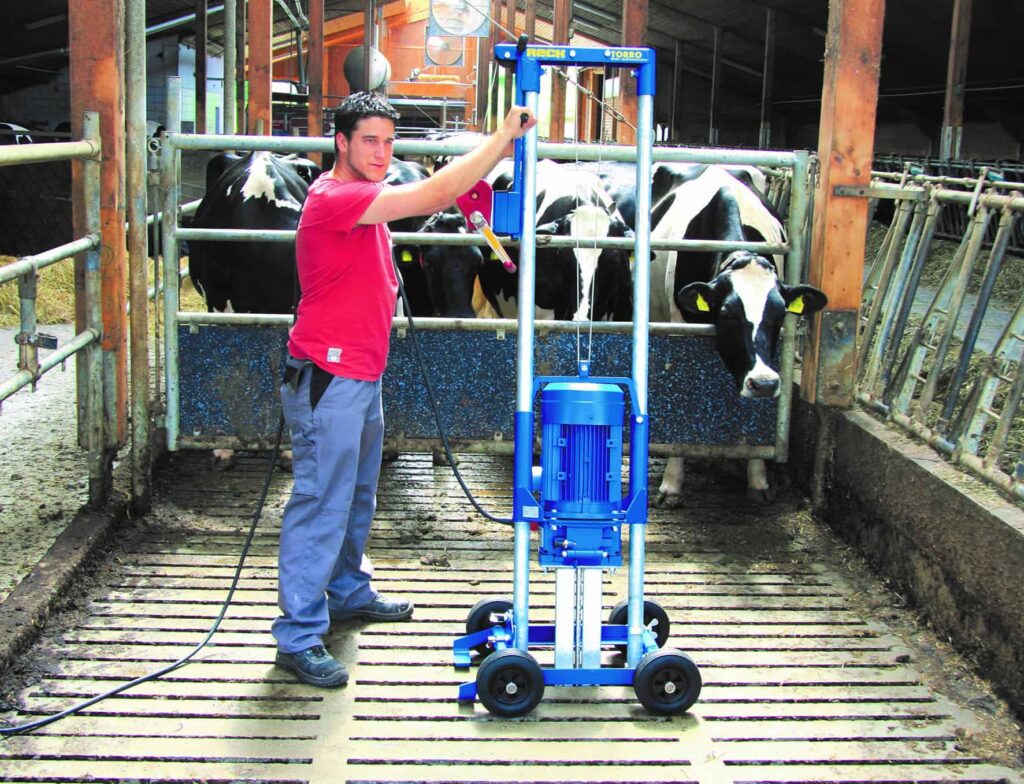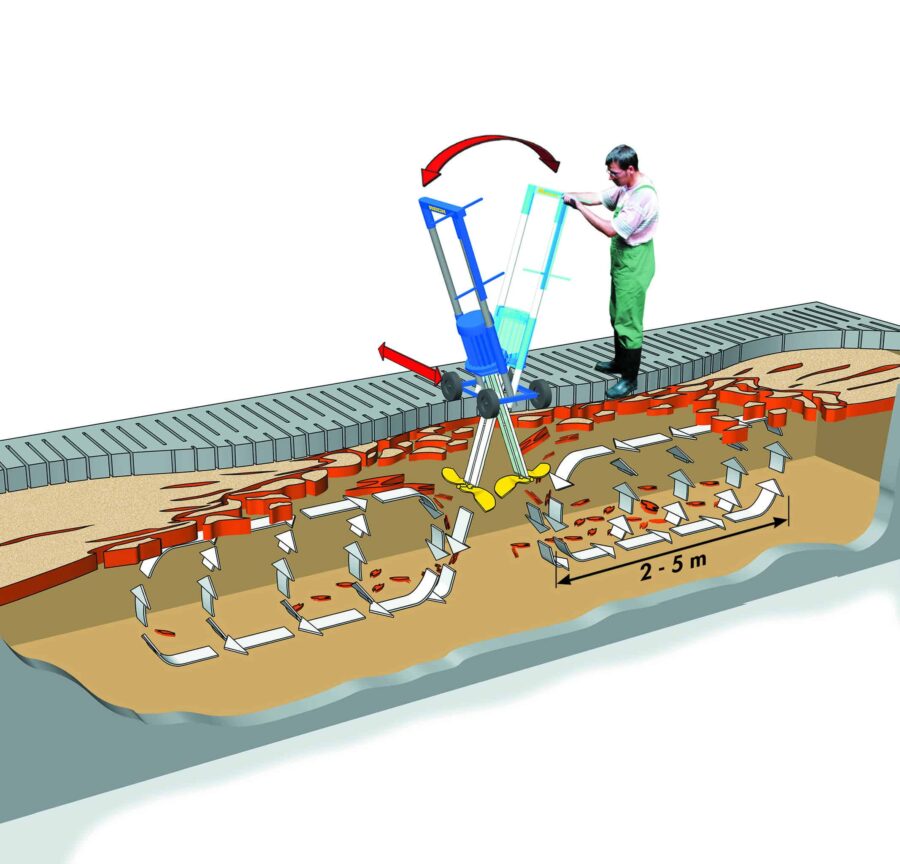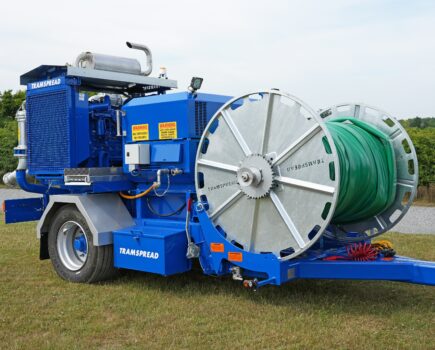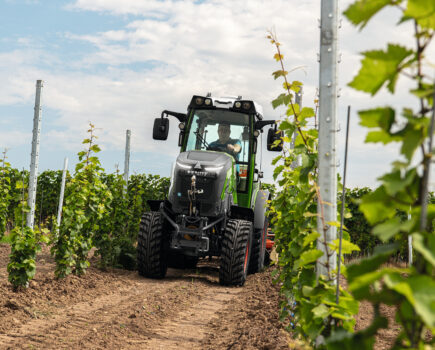German manufacturer Reck has developed a slurry mixer that fits between the slats in livestock housing, avoiding the need to remove slats, which reduces the danger of mixing the slurry collected below. Reck’s slatted floor mixer can be inserted through slats as small as 17mm and enables safe mixing with little disruption to livestock. This makes pumping easier and reduces the need for farm workers to risk going below to attend potentially dangerous blockages.
There are two models. The Porco is designed for pigsties whilst the Torro is for cowsheds. Both are light, portable and can be operated by one person. Once inserted through a gap the blades automatically unfold when the mixer is started. It can then be swivelled laterally which enables large areas to be stirred from one location. John Tydeman, from slurry specialists Tramspread says: “These easy to use machines start at just £2500 and remove any risk of falling into the slurry because access can be gained without removing concrete flooring.”
Slurry that collects below livestock housing is often the hardest to access. Creating space to mix slurry through the floor can be dangerous for both farm workers and livestock. By removing the need for large access points the slatted floor mixer keeps workers and livestock safely away from the slurry when it is being mixed.
Emissions from slurry can be strong and unpredictable. When agitated or pumped, slurry emits dangerous gases such as hydrogen sulphide. The operator should use a slurry gas detector to monitor the levels of gas when mixing takes place. “We always recommend a monitor such as the Gas Alert Clip. It’s a simple, cheap device that alerts the operator to dangerous concentrations of gas and can save lives,” advises John.
Moves by DEFRA for all slurry to be covered by 2017, and aims to abolish splash plates by 2025, will increase the need for slurry to be suitable for use with dribble bars and trailing shoes. These methods rely on slurry having a low dry matter content so mixing will become ever more important in the future. John concludes: “Pressure from government will soon force farmers to change how slurry is stored and treated. Slurry is an excellent resource if kept properly and used responsibly. We just hope that more farmers will realise this and invest in the right equipment.”






